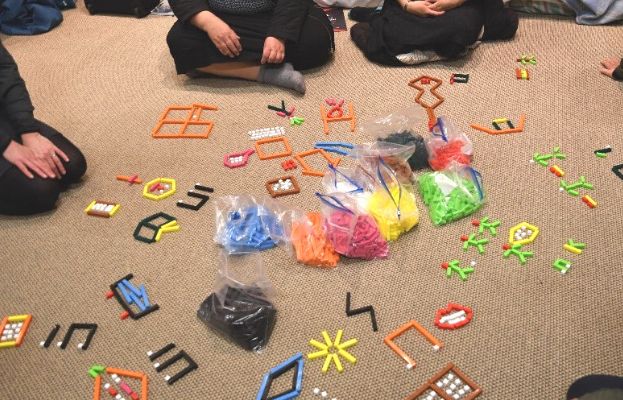|
Maori songs - Kiwi
songs - Home
This was composed in Taranaki at one of the first Te Ataarangi language revival gatherings. It compares their first rough attempts at reintroducing Te Reo with the quietly echoing calls of the local birds' dawn chorus, before the tide turns and the ocean waves come crashing in, conquering all before them.
I
have removed all the grave accents because of a software
fault I have
that turns them into ? or Ä. You can find the accented lyrics here. 1.
Tiramarama = glimmering in the
distance; a compound word from
Tira = a traveling group, and Marama = light. Friendly groups traveling at night sometimes carried torches of burning kahikatea heartwood. In the far north they used Kauri gum and dried flax leaves. Elsewhere torches were made from bundles of finely split manuka or supplejack. But these torches were mostly used when spearing eels. 2. Tiorooro or Ti-oro-oro is another compound word. Ti = squeak, and Oro = to echo, or to rub back and forth. 3.
Pipiwharauroa. Pipi
squeaks, wha four, ra
over there, roa long.
It makes four high-pitched notes then a long finishing note. Kuu-ee, kuu-ee, kuu-ee, kuu-ee, kwuuuuuuu.... 4.
Koekoea. Its call is Kwiiii....
kwiiii.....chichichichicha
5. Kanapanapa. The old West Polynesian word Napa refers to a flashing glance, then in East Polynesia Ka-napa became a single flash, as of lightning, and in Rarotonga it became glittering, while in New Zealand Ka-napa-napa implies the continually sparkling sea. 6.
Whakapapa. Whaka = to
create, and Papa = a flat surface, or layers of flat surfaces.
Thus Whakapapa = to create layers of flat surfaces, one on top
of the other.
Maori noticed how floods and eruptions added new layers on top of old ones, so "Whakapapa" was used as a geological image for each added new generation in a family, with the old supporting the new. Te Ataarangi This was the
dream of the well-loved kuia,
 Ngoi-ngoi Pewhairangi. She saw an alternative way of teaching
the Maori language to the generations of Maori and pakeha who
missed out on it when they were growing up. She saw people who
had poor memories of their formal schooling instead being taught
in their own home, in their work-places, on the marae, in
factories. She put together her maoritanga with her years of
being a field officer with the National Council of Adult
Education, and in 1979 her dream was born.
Ngoi-ngoi Pewhairangi. She saw an alternative way of teaching
the Maori language to the generations of Maori and pakeha who
missed out on it when they were growing up. She saw people who
had poor memories of their formal schooling instead being taught
in their own home, in their work-places, on the marae, in
factories. She put together her maoritanga with her years of
being a field officer with the National Council of Adult
Education, and in 1979 her dream was born. The total immersion language learning technique that is used was modeled on Caleb Gattegno's Silent Way, where the tutor is the listener rather than the speaker. It uses Cuisenaire rods and incorporates Maori values and customs. Thanks
to Emma Poundsford, this was placed |